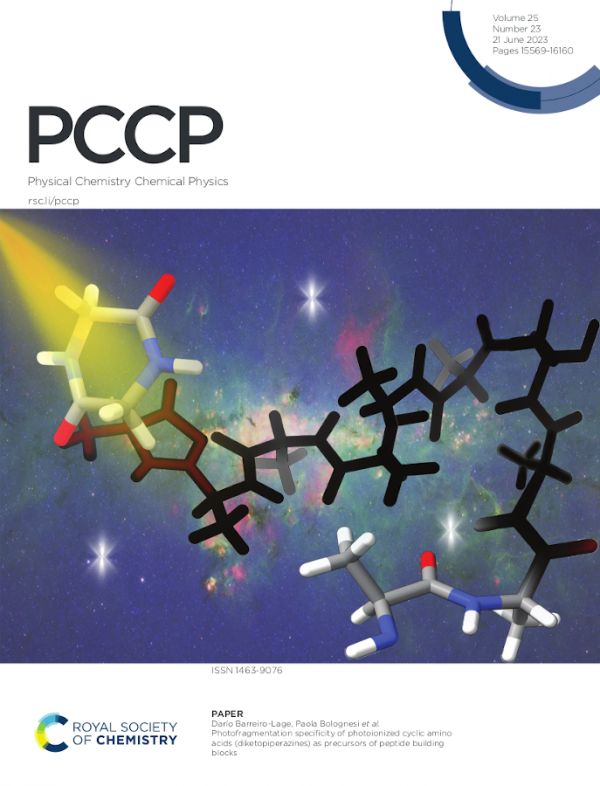Dipeptides are the simplest peptides in nature. They are constructed out of two amino acids joined together via one (linear, l, dipeptide) or two (cyclic, c, dipeptide) peptide bonds between the carboxyl and amino groups at the opposite terminals of each amino acid. l-dipeptides represent the first step in the growing complexity of biomolecules towards proteins and enzymes made by hundreds or thousands of amino acids.
c- peptides, despite the fact that are made only by few units, they may have played a role in the evolution of life as intermediates for the survival of amino acids as well as for the formation of oligopeptides. The results of the photoionization and photofragmentation studies of several species containing alanine and glycine (c-AlaAla [1,2], c-GlyGly and c-GlyAla [3]) performed by the CNR-ISM and Stockholm University at the CIPO beamline of the Elettra Synchrotron radiation facility and the theoretical modeling by the Chemistry Department -Universidad Autonoma de Madrid show that the decomposition of these c-dipeptides on one hand can led to the efficient release of prebiotic species, like neutral CO and HNCO [4], and on the other to the production of "reactive moieties", the oxazolidinones and neutral aziridine molecules, which can give rise to new peptide bonds, either reforming the original cyclic molecule or becoming the seed of a linear peptide chain.
These predicted mechanisms for peptide formation may have played a role in the early stages of the chemical evolution of life. However, their experimental verification requires several interacting molecules as source of reactants.
Therefore, future experiments on the irradiation of gas phase clusters and films of selected biomolecular samples, will be performed to mimic the presence of an environment and definitely prove the efficiency existence of these mechanisms.
References. [1] D. Barreiro-Lage et al. JPCL (2021), 12, 7379–7386; [2] J. Chiarinelli et al. PCCP (2022), 24, 5855–5867; [3] D. Barreiro-Lage et al. PCCP (2023) DOI: 10.1039/D3CP00608E; [4] S. Miller, Science (1953,) 117, 528−529. Acknowledgement. COST actions CA18212 – Molecular Dynamics in the GAS phase (MD-GAS)


 English (UK)
English (UK)  Italiano (Italia)
Italiano (Italia)